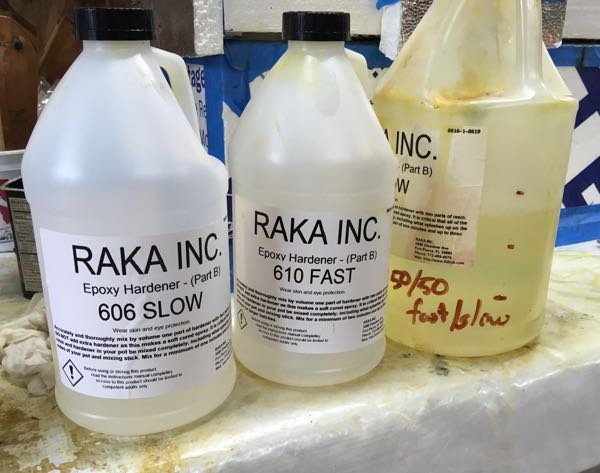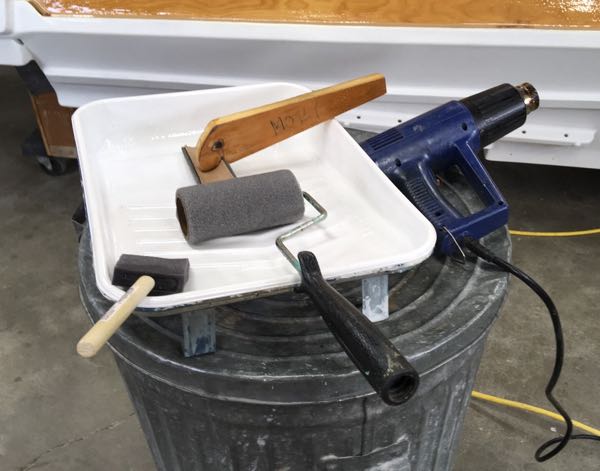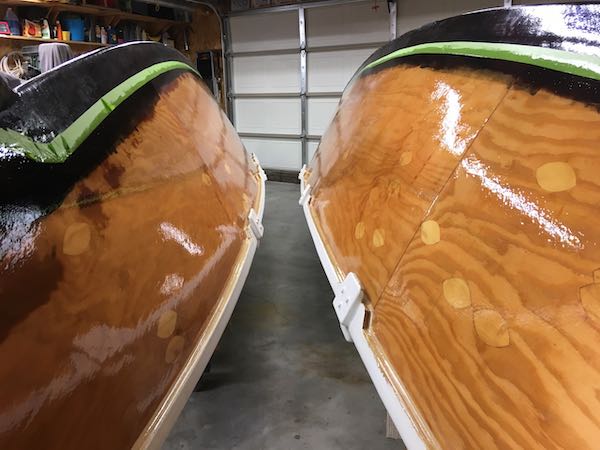Epoxy on Hulls Complete
After getting the keel protected, it was time to finish filling in the weave on the rest of the hulls. I had purposely stopped short of completely filling in the weave when I originally glassed the hulls. I knew that while working on the decks I would foul the hulls with some epoxy drips and splashes so I held off on the final epoxy coats.
First, an epoxy note. I needed more epoxy a couple of months ago and decided when I ordered to try a faster hardener to help with cure times in the cold. I talked with the folks at Raka and decided on mixing their fast and slow hardeners to get a faster cure time while still having a decent pot life. I have been happy with the pot life and cure time sped up from 12-16 hours to 6-8. So I saved on diesel because I didn’t have to run my garage heater longer.

Here’s my tools for a smooth finish when coating with epoxy - the old roll-n-tip with a little heat.

I started off with a light sanding of the old coat and paid attention to drips and problems from working on the decks. Then I put on a coat of fresh epoxy and ended up with a fairly smooth surface.
However, I could see a few problems. Now, I’m not shooting for a perfect finish - I don’t know if I’m capable of it and I’m not willing to put in the time anyway. But I did stop and mix up some West System 407 fairing filler and fixed 10-12 spots that were pretty bad and would be visible. Then I sanded the fairings out. And sanded the first coat lightly and added a second and final coat of epoxy.

As I cleaned my epoxy tools, I realized that almost all the epoxy work on the boat was done - fingers crossed! It seemed momentous. I wondered if Hallmark made an appropriate card: “Congratulations on Your Last Epoxy Batch” written over a picture of dirty nitrile gloves.
Now it’s time to prime and paint!